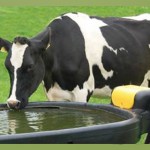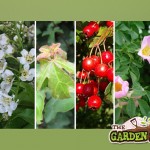The Glas Scheme will be taking applicants from the start of 2016 and will offer grants to farmers & land owners who are willing to plant a hedgerow. This is one of a range of schemes being introduced by simon convey and the department of agriculture to promote greener farming and encourage a more diverse & sustainable ecosystem and environment.
- GLAS
- Happy Cow
- Native Hedging
Of course it is farmers who have been maintaining & managing our countryside for the past centuries and it is these farmers who will determine its health and vitality into the future. As well as growing native hedging there are other initiatives open to farmers including adding bird houses to the farm, sowing wild bird cover crops, reducing emissions and maintaining stone walls.
A grant of 1000€ per year, for 5 years, is available to those who plant 200m of hedging
The exact phasing of the scheme dosn’t appear to mention which native hedging can be grown to form your hedging row, but we thought we would list a selection of plants that would be most suitable for creating a hedgerow on your farm:
Irish Native Hedging Plant Options:
Whitethorn – The is the most common plant found in our native hedging and it makes up about 70% of all native hedging in Ireland. You can plant whitethorn on its own or mix it with some of the plants below. Whitethorn, like all native plants is hardy and well suited to the Irish weather.
Blackthorn – Blackthorn is often grown for its defence qualities, The thorns can prove quite a deterrent and the plant will grow fast to form an impenetrable barrier in a short space of time
Elder – Elder berries are becoming a more popular berry of late as they can be used to make wines and tonics and the flowers too can be used to make an edible desert. The plant is a fast growing bush that can grow up to 7m in height. The foliage is a light green and it contrast well when planted in with whitethorn
Hazel – While our native hedging is being planted for wild birds and native insects and mammals, us human too can benefit from adding a few hazel plants into the hedgerow. With hazel nuts appearing in mid September meaning we can all be out foraging until late October
Willow – The fastest grower of all, willow is a bit too invasive and could take over your hedgerow. Regular maintenance and coppicing is required to keep willow in check. But the advantage of this is that you will have a regular supply of endlessly versatile and useful willow stems to work with
Guelder Rose & Wild Rose – Both plant are extremely different and both make great additions to native hedgerows. Guelder rose offers with flowers in mid summer while wild rose flower in pink or white


